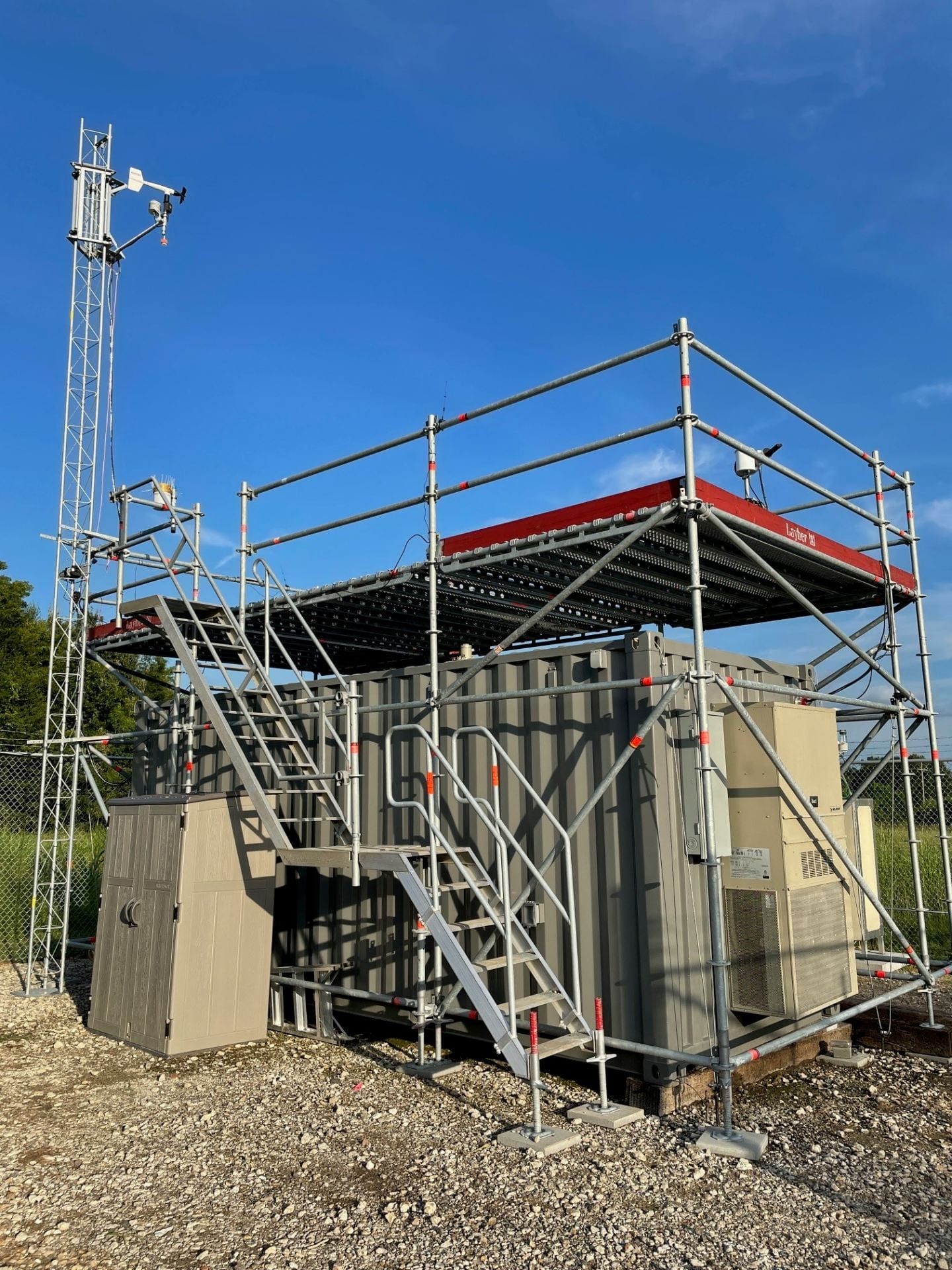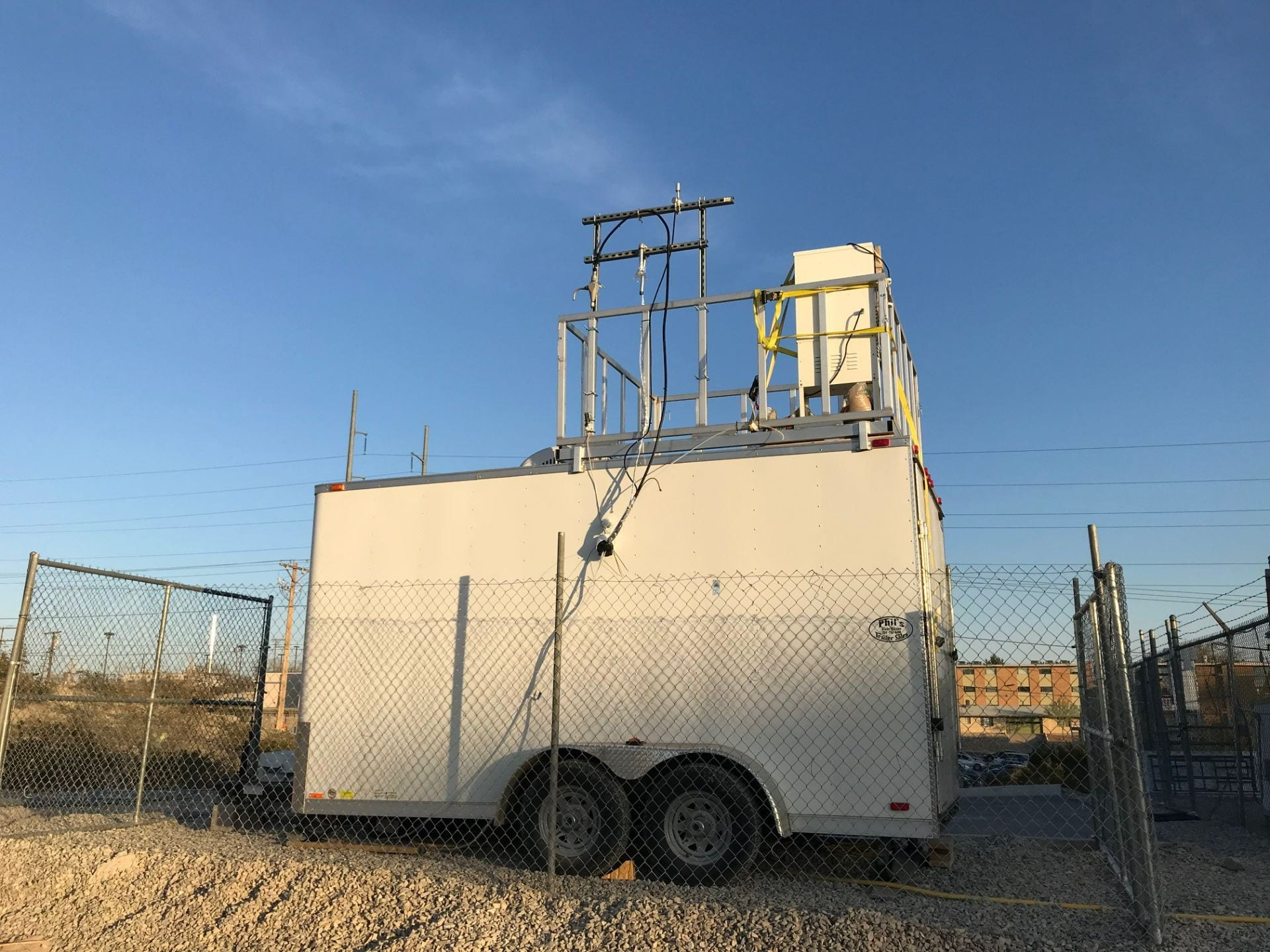In the Sheesley lab, we are interested in understanding local to global impacts of atmospheric particulate matter and volatile organic compounds (VOCs). Our work on air quality spans several continents, with studies in Texas, California, the Upper Midwest, Scandinavia, China, South Asia and the North American Arctic. Carbonaceous aerosols in the atmosphere are a continually changing complex mixture that interacts with the biosphere, impacts climate change and can have negative effects on human health. In order to understand the potential impacts of carbonaceous aerosols, the chemical composition needs to be investigated; to effectively mitigate the impact, sources of the aerosols need to be defined. This thesis has been the basis of the Sheesley lab’s aerosol studies. We have focused our efforts on refining methods for the analysis of organic tracers, the application of source apportionment models and characterization of sources and transport using carbon isotopes. We also measure and assess the potential impact of VOCs on urban and marine aerosol production. The Sheesley Lab is interested in using these methods to assess the global and local impacts of primary and secondary carbonaceous aerosols on climate change and human health. The integration of aerosol chemical and isotopic composition with VOC analysis into larger biosphere and human health research projects provides distinct advantages for a source-oriented approach to understanding impacts and mitigation strategies.
2022 review:
We had a busy field season in 2022, with TRACER-MAP, TRACER-AQ2 and BC2 in Houston, TX and BEAR-oNS in the Alaskan Arctic.
TRACER-MAP (DOE project)

The Baylor-UH-Rice-UCR TRACER-MAP team deployed the MAQL2 to the DOE site in La Porte, TX as one of 5 sites across the Houston metro area
DOE ARM feature on TRACER projects
TRACER-AQ2 (TCEQ project)
BC2 2022 (TCEQ project)
BEAR-oNS (NSF project)
2021 review:
TRACER-AQ
Field work in Port Aransas, El Paso, Galveston, Houston, and Liberty!
Winter 2021:
We are looking forward to another season of TCEQ-funded (BC)2 project in Houston and El Paso starting April 2021. We will again be deploying aerosol optical instrumentation (tricolor absorption photometers and nephelometers) and PM filter samplers at 3 sites in the Houston metropolitan area and 1 site in El Paso. We are also processing the 2020 data which included both dust and wildfire impacts on Texas cities. Collaborators include Sascha Usenko (Baylor), James Flynn (University of Houston) and Yuxuan Wang (University of Houston).
We are preparing to go into the field this April and May 2021 for the Texas AQRP funded Corpus Christi – San Antonio project which focus on aerosol, trace gas, and VOC measurements and modeling in the Corpus to San Antonio corridor. This project is in collaboration with Sascha Usenko (Baylor), Rob Griffin (Rice University), James Flynn (UH), and Yuxuan Wang (UH).
We are preparing to go into the field for the DOE-funded TRACER-MAP project in summer 2021. This project is in collaboration with Sascha Usenko (Baylor), Rob Griffin (Rice University), James Flynn (UH), Yuxuan Wang (UH), and Don Collins (UCR). The focus of TRACER-MAP is to characterize the spatial distribution of urban pollutants and their interaction with convective storms (i.e. thunderstorms) in Houston.
https://www.baylor.edu/mediacommunications/news.php?action=story&story=221467
https://www.arm.gov/research/campaigns/amf2021tracer-map
Summer 2020: The Sheesley group is preparing now to go into the field for the (BC)2 project. This project with University of Houston, funded by TCEQ (Texas Commission on Environmental Quality), is focused on assessing the influence of wildfires and dust on urban air quality in Houston and El Paso. The investigators include James Flynn (UH), Rebecca Sheesley (BU), Sascha Usenko (BU) and Yuxuan Wang (UH).
https://uh.edu/nsm/earth-atmospheric/news-events/stories/2020/0422-aerosol-monitoring.php
Recent publication using radiocarbon and ambient concentration trends to understand sources and local transport of coarse and fine carbonaceous aerosol in Houston, Texas.
Yoon S, Usenko S, Sheesley RJ. Fine and Coarse Carbonaceous Aerosol in Houston, TX, during DISCOVER-AQ. Atmosphere. 2020; 11(5):482. https://doi.org/10.3390/atmos11050482
Winter 2019: A recent publication with a group of international researchers has come out in Science Advances whic h shows the high influence of fossil fuel combustion on black carbon around five circum-Arctic sites. Sheesley and Tate Barrett (now a post doc at the University of North Texas) used radiocarbon techniques to estimate the contribution of fossil sources to black carbon in the Alaskan Arctic. This is the fifth Arctic paper that the Sheesley group has participated in or led. Look out for more from us in the coming year!
h shows the high influence of fossil fuel combustion on black carbon around five circum-Arctic sites. Sheesley and Tate Barrett (now a post doc at the University of North Texas) used radiocarbon techniques to estimate the contribution of fossil sources to black carbon in the Alaskan Arctic. This is the fifth Arctic paper that the Sheesley group has participated in or led. Look out for more from us in the coming year!
We are also engaged in undergraduate research. Sheesley is currently working with students from the BTRUE and URSA.
Recent press:
https://www.earth.com/news/black-carbon-emissions-arctic/
https://phys.org/news/2019-02-term-sources-black-carbon-arctic.html
https://www.eurekalert.org/pub_releases/2019-02/tpu-sdw021519.php
https://ensia.com/features/black-carbon/
https://www.arm.gov/news/facility/post/45146
ResearchGate: Rebecca J Sheesley on ResearchGate
Recent publications:
Moffett, C.E., Barrett, T.E., Liu, J., Gunsch, M.J., Upchurch, L.M., Quinn, P.K., Pratt, K.A. and Sheesley, R.J., (2020). Long‐Term Trends for Marine Sulfur Aerosol in the Alaskan Arctic and Relationships With Temperature. Journal of Geophysical Research: Atmospheres, 125(22), e2020JD033225.
Yoon, S., Ortiz, S.M., Clark, A.E., Barrett, T.E., Usenko, S., Duvall, R.M., Ruiz, L.H., Bean, J.K., Faxon, C.B., Flynn III, J.H., Lefer, B.L., Leong, Y.J., Griffin, R.J., and Sheesley, R.J. (2020). Apportioned primary and secondary organic aerosol during pollution events of DISCOVER-AQ Houston. Atmospheric Environment, 244, p.117954.
Yoon S, Usenko S, Sheesley RJ (2020). Fine and Coarse Carbonaceous Aerosol in Houston, TX, during DISCOVER-AQ. Atmosphere. 11(5):482.
Matthew J. Gunsch, Jun Liu, Claire E. Moffett, Rebecca J. Sheesley, Ningxin Wang, Qi Zhang, Thomas B. Watson, and Kerri A. Pratt (2020). Environmental Science & Technology. 54 (1), 92-101. DOI: 10.1021/acs.est.9b04825
Wex, H., Huang, L., Zhang, W., Hung, H., Traversi, R., Becagli, S., Sheesley, R.J., Moffett, C.E., Barrett, T.E., Bossi, R. and Skov, H., (2019). Annual variability of ice-nucleating particle concentrations at different Arctic locations. Atmospheric Chemistry and Physics, 19(7), pp.5293-5311.
Winiger, P., T. E. Barrett, R. J. Sheesley, L. Huang, S. Sharma, L. A. Barrie, K. E. Yttri, N. Evangeliou, S. Eckhardt, A. Stohl, Z. Klimont, C. Heyes, I. P. Semiletov, O. V. Dudarev, A. Charkin, N. Shakhova, H. Holmstrand, A. Andersson and Ö. Gustafsson (2019). Source apportionment of circum-Arctic atmospheric black carbon from isotopes and modeling. Science Advances 5(2): eaau8052.
Al-Naiema, I. M., S. Yoon, Y.-Q. Wang, Y.-X. Zhang, R. J. Sheesley and E. A. Stone (2018). Source apportionment of fine particulate matter organic carbon in Shenzhen, China by chemical mass balance and radiocarbon methods. Environmental Pollution 240: 34-43.
Yoon, S., D. Fairley, T. E. Barrett and R. J. Sheesley (2018). “Biomass and fossil fuel combustion contributions to elemental carbon across the San Francisco Bay Area.” Atmospheric Environment 195: 229-242.
Schulze, B. C., H. W. Wallace, A. T. Bui, J. H. Flynn, M. H. Erickson, S. Alvarez, Q. Dai, S. Usenko, R. J. Sheesley and R. J. Griffin (2018). “The impacts of regional shipping emissions on the chemical characteristics of coastal submicron aerosols near Houston, TX.” Atmospheric Chemistry and Physics 18(19).
Gunsch, M. J., Kirpes, R. M., Kolesar, K. R., Barrett, T. E., China, S., Sheesley, R. J., Laskin, A., Wiedensohler, A., Tuch, T. & Pratt, K. A. (2017). Contributions of transported Prudhoe Bay oil field emissions to the aerosol population in Utqiaġvik, Alaska. Atmospheric Chemistry and Physics, 17(17), 10879-10892.
Barrett, T. E., and R. J. Sheesley (2017), Year-round optical properties and source characterization of Arctic organic carbon aerosols on the North Slope Alaska, J. Geophys. Res. Atmos., 122, 9319–9331, doi:10.1002/2016JD026194.
Sheesley, R. J., Nallathamby, P. D., Surratt, J. D., Lee, A., Lewandowski, M., Offenberg, J. H., Jaoui, M., & Kleindienst, T. E. (2017). Constraints on primary and secondary particulate carbon sources using chemical tracer and 14 C methods during CalNex-Bakersfield. Atmospheric Environment, 166, 204-214.
Bikkina, S., Andersson, A., Ram, K., Sarin, M. M., Sheesley, R. J., Kirillova, E. N., Rengarajan, R., Sudheer, A.K. & Gustafsson, Ö. (2017). Carbon isotope‐constrained seasonality of carbonaceous aerosol sources from an urban location (Kanpur) in the Indo‐Gangetic Plain. Journal of Geophysical Research: Atmospheres, 122(9), 4903-4923.
Sinha, P. R., Kondo, Y., Koike, M., Ogren, J. A., Jefferson, A., Barrett, T. E., Sheesley, R. J., Ohata, S., Moteki, N., Coe, H., Liu, D., Irwin, M., Tunved, P., P. K., Zhao, Y. (2017) Evaluation of black carbon measurements in the Arctic. Journal of Geophysical Research: Atmospheres, 122(6), 3544-3572.
Clark, A. E., Yoon, S., Sheesley, R. J., & Usenko, S. (2017). Spatial and Temporal Distributions of Organophosphate Ester Concentrations from Atmospheric Particulate Matter Samples Collected across Houston, TX. Environmental Science & Technology, 51(8), 4239-4247.

















Pingback: ARM Research Facility